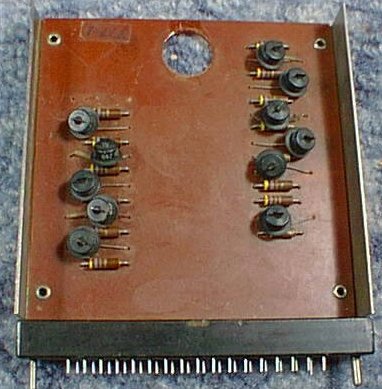
It's function is a multiple inverter, probably the simplest logic function, and it takes up more space than a palm computer.
Once uopn a time I had a collection of old computer modules which used tubes. Unfortunately, nearly everybody got tired of looking at that sort of thing and threw it out. Of course, that's what makes the remaining few so valuable.
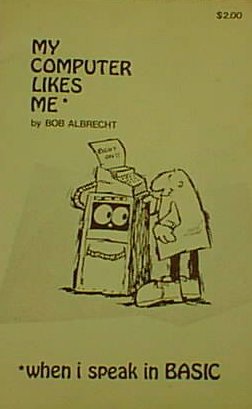
This book is all about BASIC, and the first chapter introduces the reader to the venerable Teletype machine. All of the examples shown in the book were reproduced from actual Teletype printouts.
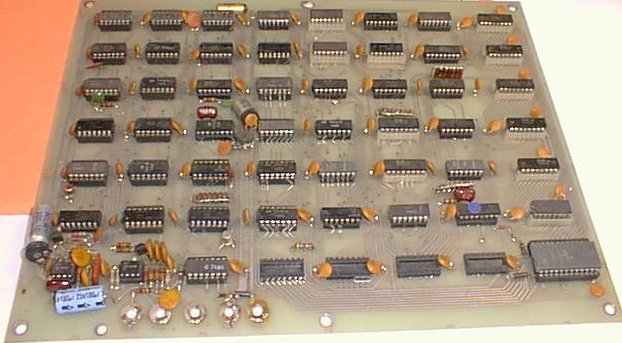
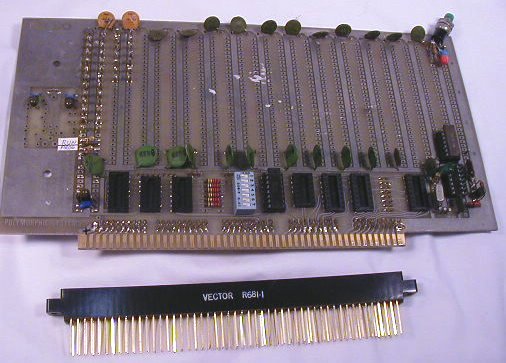
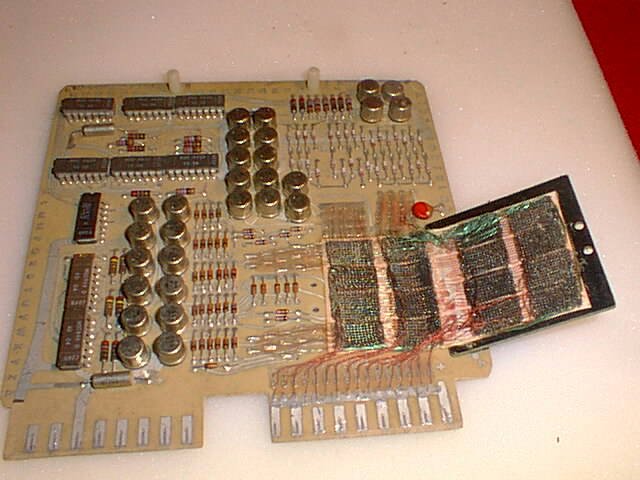
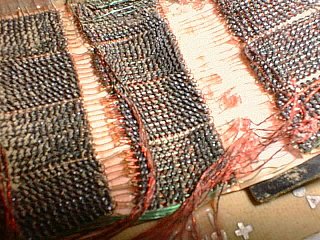
Data was stored magnetically in tiny doughnut shaped ferrite rings called cores. Two address lines ran through each core, one vertically, one horizontally, something like chain mail. Each wire carried a current, but not enough to magnetize the core. The one core which intersected the two lines did get magnetized. A third "sense" lead ran diagonally through the cores to read the state.
Each bit of information required it's own ferrite core, so a good sized memory required LOTS of threading. I imagine breaking a wire halfway through the process must have been devastating.